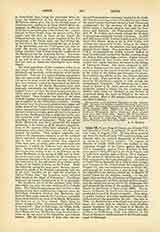

Lorette, full name, Notre-Dame de la Jeune Lorette, “Our Lady of New Loreto”; an Indian village occupied by the principal remnant of the ancient Huron tribe on the east bank of Saint Charles River, about eight miles northwest from the city of Quebec in Canada. Population in 1908, not including fifty-five Indians of other tribes under the same agency jurisdiction, four hundred and seventy-four souls. According to Father Jones, the historiographer of the Huron missions, the Indians of Lorette are the true representatives of the original Hurons, while the modern Wyandot of Ontario and Oklahoma are descended from the kindred Tionontati, or Petuns.
On the dispersion of the Hurons and their allies by the Iroquois in 1648-9 a considerable body of fugitives was gathered by the missionaries upon St. Joseph, now Christian, Island, off the shore of Nottawasaga Bay. Wasted by famine and the lurking Iroquois their stay here was short, and in the summer of 1650, to the number of about three hundred Indians, besides sixty French, including the missionaries and their assistants, they removed to Quebec and were quartered by the Jesuits At Beauport adjoining the city, where other Huron refugees had been settled the previous year. In the spring of 1651 they removed to Orleans Island, near Quebec, where they were joined by other fugitives, including a large party of Huron exiles from the distant western Island of Manitoulin. In 1656 they numbered altogether between five hundred and six hundred, but in July of that year, in consequence of a sudden destructive inroad of the Mohawk, they main fled to Quebec, whence they sent deputies to the
Mohawk begging for peace. This was granted on condition that the Hurons would remove to the Mohawk country and incorporate with that or some other Iroquois tribe, as a considerable part of the Hurons had already done in the earlier wars. Of the three Huron sub-tribes then represented at Quebec, two, the Rock and the Bear, accepted the terms and were incorporated with the Iroquois. The third sub-tribe, the Cord, of the old mission town of Teananstayae, or Saint Joseph, refused to leave the French and continued at Quebec. In 1659 a party of forty of their warriors together with twenty-three French and Algonkin, was cut off by an overwhelming force of Iroquois, after holding out for ten days, at the Long Sault of Ottawa River, above Montreal. In 1666 peace came for a time and the distressed Hurons once more ventured outside the walls of Quebec. In 1669 they were established by Father Chaumonot in a new mission settlement which received the name of Notre-Dame de Foye (now Sainte Foye) about five miles outside the city. The mission itself was dedicated to the Annunciation. The village grew, being now considerably recruited by Christian Iroquois, until, finding themselves cramped for both land and timber, they removed in 1673 to a new site about nine miles west of Quebec. Here was built a chapel modeled after the Holy House of Loreto and the village took the name of Notre-Dame de (Vieille) Lorette. In 1697 the final remove was made to their present location.
In 1794 the last Jesuit missionary in charge died and was succeeded by a secular priest. In 1829 the last full-blood Indian died and a few years later the language itself became extinct in the settlement, all the inhabitants now speaking French. The population for 1870, 1880, 1890, 1900, and 1908 was officially reported respectively at 329, 280, 293, 449, and 474. Of their present condition the agent in charge reports (1908): The special industry of the Hurons, that is to say, the making of snow-shoes and moccasins, during the first part of the twelve months just passed was not flourish-mg. The demand has decreased and the trade this year is almost nil. The heads of families on the reserve are obliged in order to support their families to go off to a distance in order to earn money in the surrounding towns. The Indians engage but little in fishing, as fish have not been abundant. On the other hand they have done a good deal of hunting and this has been both successful and remunerative. The prices of fur are very high. The Hurons cannot be reproached with uncleanliness. Nothing but praise can given in regard to temperance. As for morality, I observe that the Hurons do not deserve any reproach. (The preceding is a condensation of the report.) An efficient and appreciated school is in charge of the Sisters of Perpetual Help. All but seven are Catholic. (See .)
JAMES MOONEY

